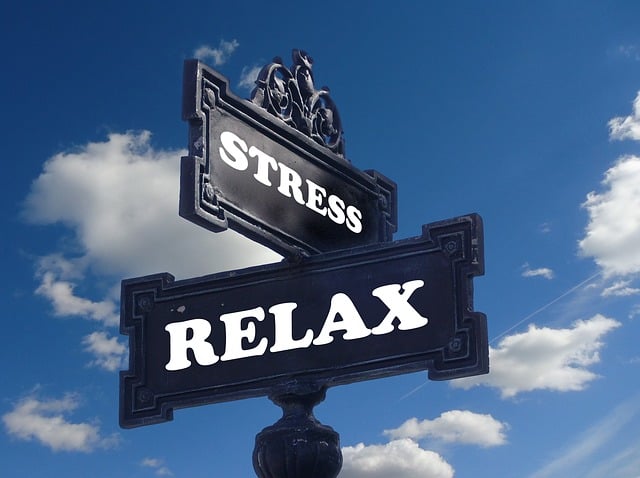Stress Relief Therapy through Exercise: Physical activity is a powerful countermeasure against chronic stress, offering scientifically proven benefits like endorphin release and hormone regulation. Diverse options cater to individual preferences, with activities ranging from yoga and tai chi to outdoor pursuits and team sports. Incorporating short bursts of movement daily and aiming for 30 minutes of moderate exercise most days significantly reduces stress levels. Tailoring activities to one's personality and lifestyle ensures enjoyment and consistency in stress management. Combining physical activity with mindfulness meditation amplifies these benefits, fostering a deeper mind-body connection and mental clarity. Real-life success stories highlight the transformative potential of exercise as a holistic stress relief therapy.
Stress is a modern-day epidemic, but there’s a powerful solution close at hand: physical activity. This article explores how exercise acts as an effective stress relief therapy, delving into the science behind its calming effects and the various types of activities that can help manage stress. From understanding the impact of stress on the body to real-life success stories, discover how regular movement enhances mental wellbeing and provides a holistic approach to combating daily pressures.
Understanding Stress and Its Impact on the Body

Stress is a normal response to various life situations, but chronic or prolonged stress can have detrimental effects on both mental and physical health. It triggers a cascade of reactions in the body, releasing hormones like cortisol that prepare us for fight-or-flight responses. Over time, this constant activation can disrupt natural imbalances, leading to issues such as anxiety, depression, sleep disturbances, and even cardiovascular problems.
Engaging in regular physical activity is an effective strategy to counteract these stress-related impacts. Exercise prompts the release of endorphins, often referred to as “feel-good” hormones, which act as a natural form of stress relief therapy. Moreover, it helps regulate cortisol levels, promoting overall well-being and providing a healthy outlet for managing daily stresses.
The Science Behind Exercise as a Stress Relief Therapy

Exercise has been recognized for centuries as a powerful tool for promoting physical health, but its benefits extend far beyond muscles and bones. The science behind exercise as a stress relief therapy is grounded in our bodies’ complex physiological responses to physical activity. When we engage in movement, whether it’s a brisk walk or an intense workout, the body triggers a cascade of chemical reactions. One of the key players is the release of endorphins, often referred to as ‘feel-good’ hormones, which interact with the brain’s receptors to reduce feelings of pain and create a sense of well-being. This natural high can significantly alleviate stress and anxiety by shifting our focus away from stressful thoughts.
Moreover, regular physical activity helps regulate the body’s response to stress by influencing hormone levels. It reduces cortisol, often termed the ‘stress hormone,’ which is released in high amounts during stressful situations. By decreasing cortisol levels, exercise promotes a sense of calm and relaxation. Additionally, engaging in physical activities can improve sleep quality, another critical factor in managing stress. Quality rest allows the body to restore and rebalance, further enhancing one’s ability to cope with daily stressors.
Different Types of Physical Activities for Relaxation

Physical activities offer a multifaceted approach to stress relief, catering to various preferences and fitness levels. From gentle yoga and tai chi to high-intensity interval training (HIIT) and outdoor adventures like hiking or cycling, there’s a type of exercise for everyone. Yoga, in particular, has gained popularity as an effective stress relief therapy due to its focus on breathwork, mindfulness, and gradual movement. Tai chi, with its slow, flowing motions, also promotes relaxation and mental clarity.
For those who enjoy being outdoors, engaging in activities like gardening, swimming, or even a leisurely walk can be powerful tools for managing stress. These activities not only encourage physical movement but also immerse individuals in nature, which has been shown to have calming effects on the mind. Moreover, team sports or group fitness classes create a sense of community and camaraderie, adding another layer of stress-reducing benefits beyond just the physical exertion.
Benefits of Regular Movement for Mental Wellbeing

Regular physical activity is a powerful tool in the battle against stress and its negative impact on mental wellbeing. Movement has been scientifically proven to stimulate the release of endorphins, often referred to as ‘feel-good’ hormones, which act as natural painkillers and promote relaxation. This physiological response helps combat the body’s stress reaction, reducing levels of cortisol, a hormone associated with anxiety and depression.
Beyond the biological effects, engaging in physical activities for stress relief therapy can provide a much-needed mental break from daily pressures. Exercise offers a chance to focus on the present moment, shifting attention away from stressors and fostering a sense of calm. It also enhances cognitive function and improves sleep quality, two key factors that contribute to overall mental resilience and a positive outlook on life.
Incorporating Exercise into Your Daily Routine

Incorporating regular physical activity into your daily routine can be a powerful tool in managing and reducing stress levels. Exercise releases endorphins, often referred to as ‘feel-good’ hormones, which naturally enhance mood and promote relaxation. Even short bursts of movement throughout the day can make a significant difference. Whether it’s a brisk walk during lunch breaks, a few simple stretches at your desk, or joining a local sports team, finding an activity you enjoy is key to making exercise a sustainable part of your life.
Consistency is crucial for stress relief therapy through physical activities. Aiming for just 30 minutes of moderate-intensity exercise most days of the week can provide substantial benefits. Over time, this can become a cherished routine that not only improves mental health but also boosts overall fitness and well-being.
Choosing Activities That Suit Your Personality and Lifestyle

When considering physical activities for stress relief, it’s essential to select exercises that align with your personality and lifestyle. What works for an extrovert who thrives in social settings might not be suitable for an introvert seeking solitude. Similarly, a demanding work schedule requires activities that can easily fit into your routine without causing additional stress. Activities like yoga or tai chi are known as effective stress relief therapies for their focus on breath control and mindfulness, making them ideal for those seeking quiet reflection.
On the other hand, if you’re an avid sports enthusiast, high-intensity interval training (HIIT) or joining a local sports team could be excellent options. These activities not only provide physical benefits but also release endorphins that combat stress. Ultimately, the key is to find an activity that brings you joy and relaxation, ensuring it becomes a sustainable part of your routine for ongoing stress management.
Mindful Movement: Combining Exercise with Meditation

Combining physical activity with mindfulness meditation, often referred to as “Mindful Movement,” offers a powerful dual approach to stress relief therapy. This practice involves focusing your awareness on the sensations within your body during exercise, fostering a deeper connection between mind and body. By engaging in this mindful practice, you can transform your workout into a calming experience that reduces tension and promotes mental clarity.
Mindful Movement encourages individuals to be fully present in the moment, observing their breath, muscle engagement, and bodily feelings without judgment. This simple yet profound shift in perspective can enhance the benefits of exercise by reducing the mental distractions that often accompany stressful thoughts. As you move through each exercise, you learn to accept and release physical tension, carrying this sense of calm into your daily life as a highly effective stress relief therapy.
Real-Life Success Stories: Overcoming Stress Through Activity

In a world where stress is an ever-present companion, many have found solace and victory through the simple yet powerful medium of physical activity. These real-life success stories serve as a testament to the transformative potential of incorporating movement into one’s routine. For instance, consider Sarah, who battled chronic anxiety. She discovered that regular jogging sessions not only improved her cardiovascular health but also acted as an effective stress relief therapy. Her once tangled mind found clarity amidst the endorphins released during her daily runs.
Similarly, Mark, a working professional overwhelmed by demanding deadlines, turned to yoga. What started as a way to stretch his muscles evolved into a mindful practice that taught him breath control and mental fortitude. He learned to navigate life’s stressors with a calmer demeanor, making his work life more manageable. These narratives illustrate how physical activities can be a game-changer in managing stress, offering not just a temporary escape but lasting strategies for a healthier, happier mind.
